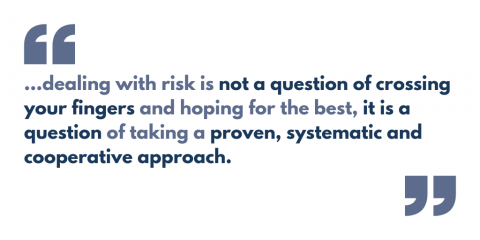WA Management provides professional, adaptable and appropriate solutions for your Health and Safety needs. Our research blogs take a detailed look at particularly topical areas of the sector, or risks that are repeatedly overlooked. This week, we cast our scrutinising eye onto a pressing Health and Safety challenge. Falls from Height continue to be one of the largest and most severe causes of workplace injury. So, what are the risks? How can we prevent or account for them? Keep reading to find out.
Working at Height at a glance
 Working at Height does not have to conjure up terrifying images of workers stranded 100s of metres in the air to be dangerous. The HSE defines ‘Work at Height’ as any work that is undertaken ‘in a place, where if there were no precautions in place, a person could fall a distance liable to cause personal injury’. This broadly defined sector thus covers everything from unsafe ladder practices to working on fragile roofs. Nearly every profession has to be prepared for the risks of falls from height to some degree.
Working at Height does not have to conjure up terrifying images of workers stranded 100s of metres in the air to be dangerous. The HSE defines ‘Work at Height’ as any work that is undertaken ‘in a place, where if there were no precautions in place, a person could fall a distance liable to cause personal injury’. This broadly defined sector thus covers everything from unsafe ladder practices to working on fragile roofs. Nearly every profession has to be prepared for the risks of falls from height to some degree.
It is this ubiquity that means that Working at Height continues to be one of the biggest sources of workplace accidents across the UK. Indeed, a recent article by safety specialists Heightsafe highlighted that 11% of the accidents at 4 major UK engineering works were caused by falls from height. They analysed the data from HS2 ltd, Sellafield Ltd, Network Rail and Highways England to produce these results, which showed that 56 of the 538 non-fatal incidents at the sites between 2013-18 were the result of Work at Height.
Therefore, whichever way you look at it, Working at Height is a Health and Safety hazards the requires attention.

Control measures: How can the risks be mitigated?
Fortunately, there are some simple and effective ways to assess and mitigate the risks associated with Working at Height. These sensible precautions can apply both to low-risk and high-risk scenarios:
- Assess the risks: As in any Health and Safety conundrum, knowledge is power. Adequately weighing up the dangers of a task empower decision-makers to take the safest course of action.
- Make a decision: If reasonably practicable, avoid Working at Height altogether, as the safest way to prevent injury is not to undertake dangerous work. If not possible, put measures in place to prevent falls or minimise injuries (see section below).
Theory in practice: What can be done?
So, you have carried out extensive risk assessments and communicated your ideas, and you determine that Working at Height is not only reasonable, but necessary, to the success of a project – what next? There are several key Dos and Don’ts that should be factored in to ensure that you keep those undertaking the work safe.
Here is a summarising graphic showing the key points:

Conclusions
As we have seen, Working at Height continues to be a persistent and challenging aspect of modern Health and Safety, and one that remains as major engineering projects grow in ambition and scale. This dangerous activity should not be overlooked. As in all aspects of Health and Safety, dealing with risk is not a question of crossing your fingers and hoping for the best, it is a question of taking a proven, systematic and cooperative approach which empowers employers and employees alike.
To recap; if you can, avoid working at height altogether. If this is not feasible, look for effective ways to mitigate the risk and severity of injury. Finally, constantly revisit and adapt these safety strategies as circumstances change and new research comes to light.
If YOU have any concerns about Working at Height or any of the other issues raised during this research blog, get in touch with WA Management HERE for a free consultation.
SOURCES
Read the Heightsafe article HERE
Or take a look at the HSE guidelines for Working at Height HERE
